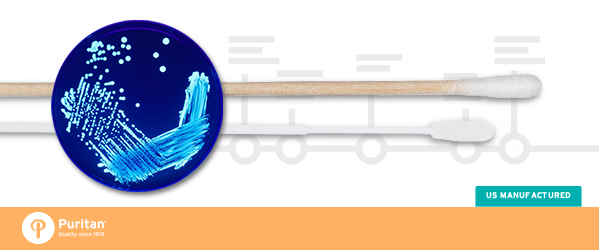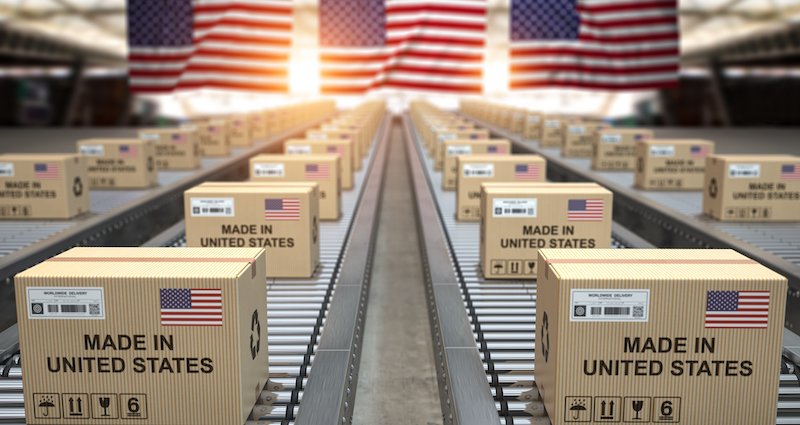
As part of our 100th year of service celebration, we’re delighted to share this brief history of the evolution of specimen collection tools, with a focus on transport medium and swabs.
Transport medium, in general, is defined as a formulation that preserves a specimen and minimizes bacterial overgrowth for the time necessary to transport it to the laboratory.
Consider the swab – it has been around for less than a century. It began quite simply, chronicled in 1923 as the inspiration of a Polish-American named Leo Gerstanzang. Today, the swab, no longer a simple tool but rather a broad range of tipped applicators, is used for everything from patient care and microbiology to forensics and manufacturing.
Puritan dates back to 1919, before that first cotton swab appeared on scene in 1923. That’s right! Puritan began the production of toothpicks 100 years ago, before Leo devised his swab.
Here's more on the history of specimen collection and the evolution of the swab.
1948: Stuart's Medium
In 1948, the efforts of Dr. R.D. Stuart and his co-workers led to the introduction of what is known today as Stuart's medium. It was developed for maintaining the viability of organisms while in transit, and it marks the first time a swab was used as a specimen collection device. It consisted of sodium thioglycolate, sodium glycerophosphate, calcium chloride, and methylene blue as a color indicator.
Two decades later Cary and Blair modified Stuart's medium by replacing sodium glycerophosphate with inorganic phosphate and raised the pH to 8.4. The modification helped to support the viability of enteric bacteria such as salmonella and shigella in fecal samples.
1967: Amies Medium
In 1967, Dr. Amies confirmed Cary and Blair's finding and further modified the Stuart's formula by eliminating methylene blue and adding inorganic phosphate salts as buffering agents and charcoal. These modifications resulted in higher percentage of positive cultures, especially in samples containing fastidious organisms such as Neisseria gonorrhoeae.
Since their introduction, Stuart's and Amies transport swabs have become the most popular and commonly used transport systems for a broad range of clinically significant microorganisms. Cary- Blair medium is chosen for supporting the viability of the enteric pathogens in fecal samples.
Essentially unchanged in formulation, today these transport media remain in common use.
Advancements in Swab Technology
However, the swab collection devices, which are the critical component of any transport system, have continuously evolved and gone through multiple technological advancements in design, materials and performance characteristics to the point that one swab no longer fits all purposes.
Limitations of Cotton Swabs – While Dr. Stuart was developing his medium, Puritan began manufacturing tipped applicators. These applicators, made by wrapping a pledget of cotton around a wooden handle, became the tool for clinical specimen collection. Though commonly accepted and widely used, the natural materials of these cotton-tipped applicators contained fatty acids that were inhibitory to some microorganisms.
Development of Synthetic Fiber Swabs - Recognizing the importance of pre-clinical steps in specimen collection, Puritan rolled out a broad line of spun fiber swabs that incorporated synthetic fibers. These swabs, with both wood and plastic handles, had tips of rayon or polyester, fibers that were proven suitable for microbiological specimen collection.
Need For High Absorption Swabs - Despite the significant improvements made in design and manufacturing of traditionally spun swabs to enhance their collection capabilities, the physical properties of long-spun fibers, whether natural or synthetic, proved to limit sample collection and release. The result was inadequate specimen yield.
Realizing the limitation of the traditionally wrapped swabs in releasing microbial cells, Puritan initiated an aggressive research and development program to create a new generation of swabs.
1990: Media-Free Transport Systems (Elution Swabs)
In 1990, Puritan was instrumental in developing a foam swab for media-free transport systems for Becton Dickinson, which today is known as Culturette EZ foam transport system.
The foam swab, made from polyurethane medical grade 100 ppi foam, was the first specimen collection device adopted by the POCT community for its collect and release attributes. It is still widely used today. This was truly the first elution swab on the market.
Puritan continued its aggressive research and development program and turned its attention to the technically advanced flock technology. Newly focused R&D activities ultimately led to a breakthrough in the development of a superior flock swab.
2000s: Flocked Swabs
This specimen collection device, trademarked HydraFlock, is widely used in the clinical diagnostic field for improved sample collection, complete sample release and patient comfort. The unique micro-geometry of each HydraFlock fiber increases the surface area of the swab tip.
This fiber geometry, best described as ‘split ends’, provides increased surface tension and micro channels for the collection and release of the entire specimen while preserving intact single cells.
2011: Transport Media Formulation
With the completion of a state-of-the-art formulation lab, Puritan was equipped to complete the specimen collection and transport line with the addition of fluid transport media. Puritan’s laboratory staff formulated and validated Liquid Amies transport medium, shipping the first order in June of 2012.
This product was provided with a HydraFlock swab, and given the name Opti-Swab, Puritan’s first transport media device. Opti-Swab has proven to be a superior device for bacterial specimen transport.
In December of that same year, it was followed by the first shipment of UniTranz-RT, Puritan’s transport media for viral specimen transport. UniTranz-RT is provided with a PurFlock Ultra or polyester swabs for site appropriate specimen collection.
These liquid transport media meet the needs of all microbiologists, whether they utilize traditional means or automated process.
2017: DNA and the Need for Reliable Molecular Specimen Collection and Transport
Buccal cell collection had been routine in forensic and pharmacogenetics applications for years when Puritan launched PurSafe, a liquid preservation solution for the transport of intact cellular specimens.
Prior to the availability of a stabilization or preservation solution, DNA was commonly stored in a dry state, but remained susceptible to degradation by moisture and poorly controlled conditions.
For researchers working to unlock the secrets of disease, a more reliable method was needed. PurSafe assured the researcher that the molecular specimen collected, whether in a lab or in the field, would be protected from degradation in transport and storage.
Today, Puritan is the largest and oldest manufacturer of traditional and specialty swabs applicators and is fully committed to and invested in the design and development of pre-analytical tools for clinical specimen collection, preservation, and transport. For more information on our century of service, please visit our 100 Years of Excellence page.
Conclusion
For details on these and other products, please visit www.puritanmedproducts.com. For samples and product support, please contact our sales team at sales@puritanmedproducts.com.




